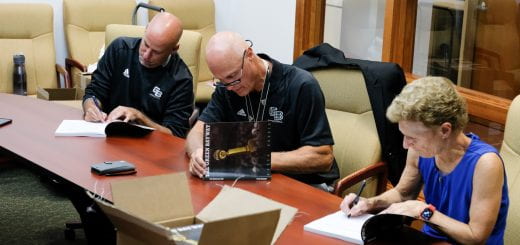Schultz leads the way in culturally responsive teaching
 The professional challenge for first grade teacher and 2011 UW-Green Bay master’s degree graduate Alison Schultz isn’t unique. In fact, a growing number of educators work each day to improve learning by being culturally responsive to the needs of their students and families. In Schultz’s case, many of the families that attend Green Bay’s Nicolet Elementary School, moved to Green Bay from Mexico.
The professional challenge for first grade teacher and 2011 UW-Green Bay master’s degree graduate Alison Schultz isn’t unique. In fact, a growing number of educators work each day to improve learning by being culturally responsive to the needs of their students and families. In Schultz’s case, many of the families that attend Green Bay’s Nicolet Elementary School, moved to Green Bay from Mexico.
However, when considering her project for her master’s degree in Applied Leadership for Teaching and Learning at UW-Green Bay, Schultz saw the value in getting to know her students and their families at a deeper level. Part of her research included a project, ‘Portraits of Mexican Immigrants,’ in which she interviewed four families from the Nicolet School community. Schultz said her goal was to better understand her students’ families, their lives in Mexico, their journey to the United States and their adjustment to the daily life in the U.S.
“Three interviews focused on families of my students and I also interviewed Marco Olsen Guillen, a paraprofessional in the district, and a student at UW-Green Bay,” she said. “All of the interviewees were very willing to help and seemed excited that I was taking interest in their culture and their lives.”
A number of common themes emerged among the interviewees:
— a dangerous journey to the United States with coyotes (those who smuggle people into the U.S. for cash).
— little or inconsistent education in Mexico.
— employment in the service industry in Green Bay, e.g. meat-packing, roofing, mechanics.
— language barrier with children often having to translate for their parents.
— hopes for a college education for their children.
— learn English but preserve the Spanish language.
— great appreciation of teachers/school.
— loss of traditions from homeland, (Day of the Dead, etc.,) and gaining assimilation to U.S. customs.
— concern about driver’s license expiration (can’t be renewed without proof of citizenship).
— striving to gain U.S. citizenship.
The project helped Schultz understand how educators can help these families in transition. She encourages those with multicultural classrooms to consider cultural nights and incorporate various multicultural material and language into the classroom, while providing a school atmosphere rich in both languages. To reach the families of her students, she suggests providing homework (with answer keys), family letters and other correspondence, if possible, in the native language; working with school administration to provide English classes for parents after school; provide for translators and provide multiple bilingual programs (one way, two way transitional and bridging).
“The interviews provided me a better understanding of my students’ backgrounds. I have developed stronger teacher-parent bonds, and I am better able to meet the diverse needs of each of my students,” she said.




